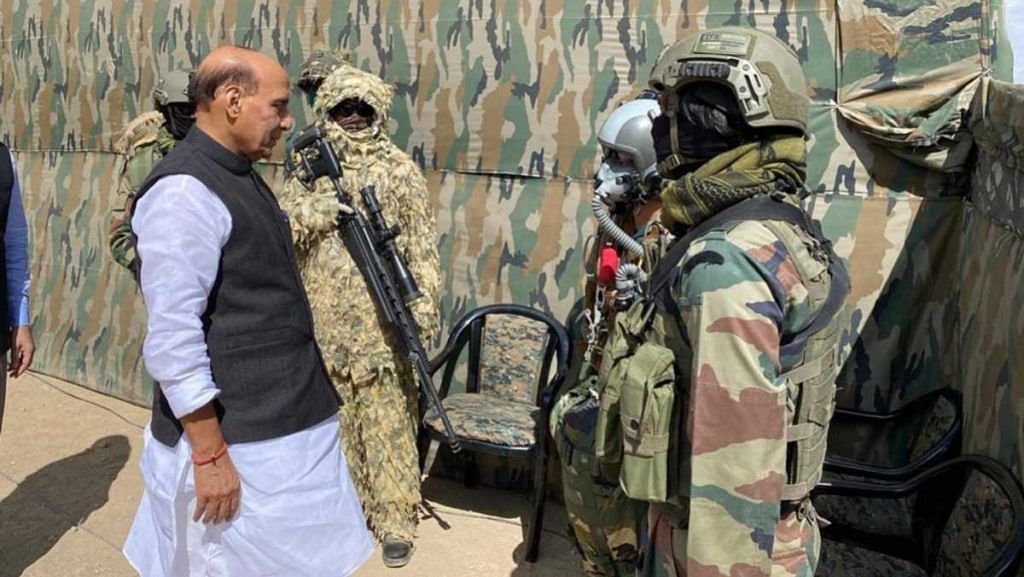New Delhi: For several weeks, the attention in the India-China standoff has been fixated on the Galwan Valley and the Pangong Tso, but the conversation is now shifting to the Depsang Plains, said ThePrint’s Editor-in-Chief Shekhar Gupta in episode 570 of ‘Cut The Clutter’.
The focus has now shifted to an area called the Sub Sector North (SSN) where the Daulat Beg Oldie (DBO) — a strategic military base — is situated. However, the catchword right now is the Depsang Plains that are located near it.
“In 1962, the tiny Indian detachment in DBO had been ordered to withdraw, so India had abandoned it. But the Chinese had also not come and occupied it. They, however, occupied much of Depsang Plains to the west and India was left with the Depsang bulge,” said Gupta.
The Depsang Plains are large plains that are suitable for driving armoured carriers, artillery and mechanised units, which is unusual at the height of about 17,000 feet above sea level. Much of these plains have been under Chinese control since the mid-1950s.
The Chinese have huge expanses of these plains that lead up to their big bases and logistics through the plains are much less challenging than valleys, mountains etc.
Defensively speaking, retired Lieutenant General H.S. Panag had said the defence of Daulat Beg Oldie has many challenges and vulnerabilities. The biggest one is that it is the other end of the Indian supply chain through very difficult territory where the only highway or only road connecting to this is almost constantly within the direct fire range of the Chinese.
“So to maintain large forces that far away from your supply nucleus through this very tenuous route, and carry out offensive operations is a big challenge to begin with,” Gupta said.
In the mountains — the weather, the geography and the distance are also weapons of offence and defence.
If the Chinese are able to use the cushioning power of all the vast plains they have behind them, they can bring in much larger bodies of mechanised forces here and if they can somehow defy the Indian line of defence south of DBO then they can threaten India in its soft underbelly — which is the Sasser La Pass — at the base of Siachen Glacier that is crucial for supplies.
If this area comes under pressure, Pakistan can increase pressure from the other side, noted Gupta. Therefore, Sub Sector North is seen as a key area of defensive concern.
Also read: Did Jaishankar, Wang Yi really break the ice in Moscow? India can’t forget — winter is coming
Has China occupied Indian territory?
There is a factor in Depsang Plains, which is the Limits of Patrol (LOP). It is a unique area where India and China’s perception of LAC vary and the limits to which India can patrol is also in a way notified.
For almost 30 years now, the Indian side has not moved beyond the patrolling points PP10, PP11, PP11A, PP12, PP12A and PP13.
Now, a bottleneck area in the region, which cannot be accessed by Indian vehicles, is the major area of concern. When Indians try and patrol beyond this bottleneck to PP11 to PP13, the Chinese come in vehicles in strength and stop the Indian patrol.
This is why the government is saying the Chinese have not occupied any territory, and they are not lying. At the same time, those who say that the Chinese have stopped access to certain territories are also right.
Therefore, the correct answer to the question, ‘has India lost territory to China’ is that India has been denied access to territory in China in Depsang Plains.
However, the Chinese are not sitting there, unlike the situation between Finger 8 and 4 in Pangong.
Since it’s a fraught situation, the Indian Army has also decided to not aggravate it.
The expectations on the Indian side are that once there are negotiations and disengagement, we will be able to resume patrol in these points, Gupta said.
Also read: India ‘extra’ alert along LAC stretch, Pakistan border as China delays corps commander talks
Why Rajnath Singh is not talking about Depsang Plains
Defence Minister Rajnath Singh is not talking about Depsang because this is a situation where he can afford to tell us the entire truth, said Gupta. Singh did not mention the plains during his speech in the Lok Sabha Tuesday.
“The entire truth is the Chinese are denying India access to this area. But it would not be a lie to say that the Chinese do not have any Indian controlled territory in their control,” said Gupta
“Therefore, Singh is not lying in Parliament. When he says that there are operational issues, which are sensitive and I can’t talk about them, this is one of the areas that’s under consideration,” he added.
General Panag also said that by creating this situation, Xi Jinping is actually trying to offer India a negotiating line — the 1959 Chinese claim line.
If that is true, the speculation that China is trying to secure Aksai Chin is also right, noted Gupta.
“India has to be prepared about it. In terms of public opinion, it does no harm for us to know the facts as precisely as possible,” added Gupta.
Watch the latest episode of CTC here:
